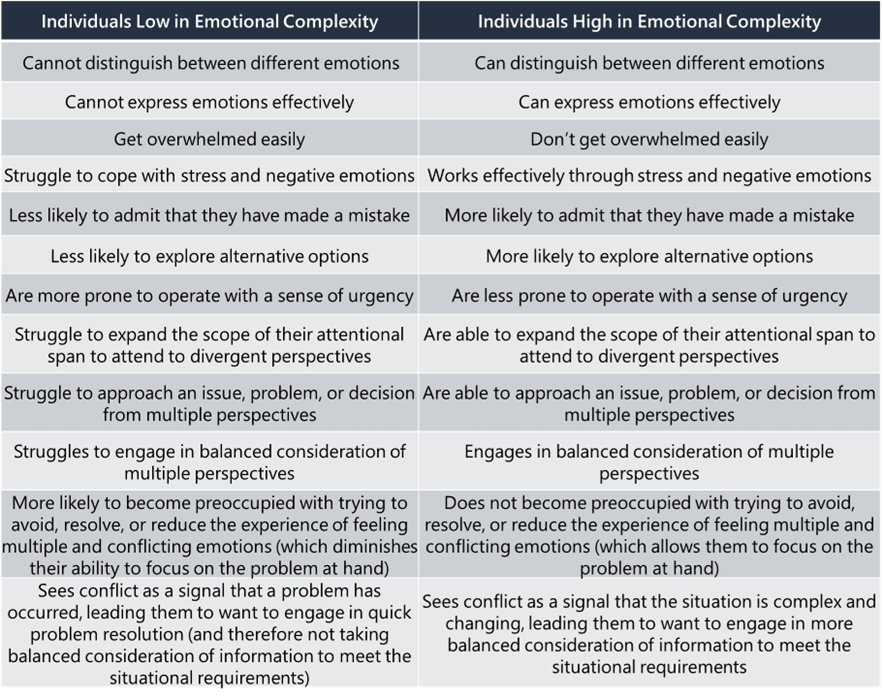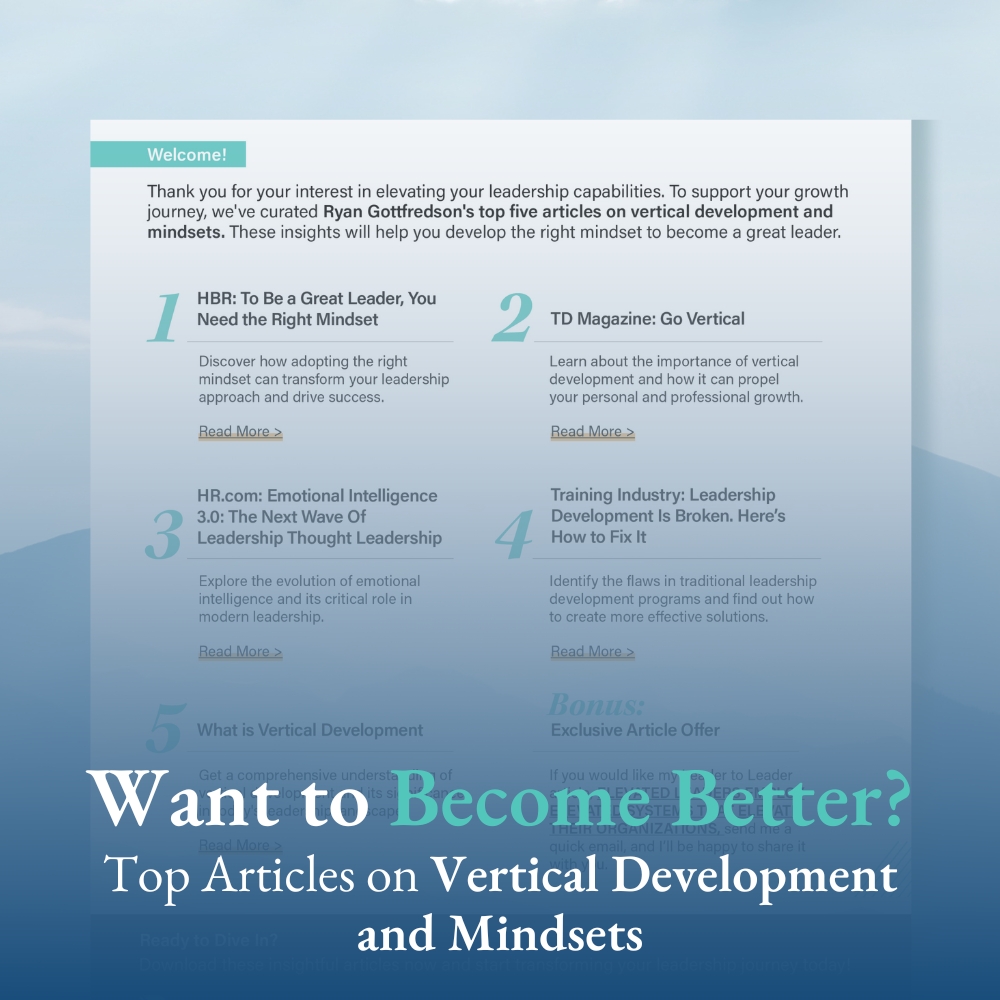In order for leaders to effectively navigate complex situations, they need to become complex beings.
In my academic research, I have come to learn that there are different forms of complexity. There is moral complexity, behavioral complexity, emotional complexity, cognitive complexity, and leader complexity.
I am in the middle of diving into these different forms of complexity. This week, I will focus on emotional complexity.
Regardless of the form of complexity, what is important to note is that there is a reciprocal relationship between vertical development and complexity:
- As people become more complex, they become more vertically developed
- As people become more vertically developed, they become more complex
By identifying and understanding the different forms of complexity, we can evaluate just how complex we are across these different forms. And, if we find that we aren’t very complex with one form of complexity (at least not to the degree we would like to be), that now becomes an area to focus on for our continued vertical development.
Let me introduce you to emotional complexity.
Emotional Complexity
The basic premise of emotional complexity is that the more a leader can tap into a greater breadth and depth of emotions, and even experience diverse emotions simultaneously, the more effectively they will be able to navigate the range of diverse and complex conditions that they face.
Let’s dive into this connection between emotional complexity and leadership effectiveness more deeply.
What is Emotional Complexity?
There are three facets of emotional complexity. They are:
- Emotional differentiation – One has the ability to discern among many positive and negative emotions (i.e., they have the ability to make fine distinctions between emotions)
- Emotional intensity – One has the ability to feel and experience a variety of emotions with great richness
- Emotional interdependence – One can experience diverse emotions simultaneously (e.g., happy-sad; fear-hope) and can experience diverse emotions sequentially (e.g., excited and then feel blue; sad and then feel angry)
The reality is that people vary across all three facets. Some people can differentiate emotions from each other, while others struggle to do so. Some people experience intense emotions, while others have muted emotional experiences. And, some people do a good job of experiencing and getting in touch with experiencing multiple emotions simultaneously, while others get stuck or locked into a single emotion in a given experience.
What Emotional Complexity Looks Like
The table below compares and contrasts how people differ depending on the level of emotional complexity.

The Benefits of Emotional Complexity
Research is finding that the primary benefits of emotional complexity include:
- Increased cognitive flexibility
- Greater well-being
- Greater resilience
- Fewer physical health symptoms
- Fewer psychological health issues
- Greater ability to deal with emotions (positive or negative)
- Greater capacity to navigate and cope with the emotional world
- Better at social adjustment
- Better able to capture rich and varied information about their environment
Implications for Leaders
Emotional complexity is essential for effective leadership because:
- It allows them to be more creative thinkers. They are better able to expand the categories they use, embrace atypical information, and draw associations between seemingly unrelated information. This allows them to better address the multiple and diverse demands of different stakeholders.
- It allows them to be more strategic thinkers. They are more likely to deescalate commitment to an initial but unsuccessful decision in an attempt to turn the situation around. (Less likely to overcommit to a course of action.)
- It allows them to make more adaptive decisions. They are less prone to get stuck into a single decision, and are able to adapt to the current or changing future needs.
- It signals to their followers that they are flexible and open. This socially encourages and empowers followers to proactively speak up and advance bottom-up change.
In all, leaders with high emotional complexity:
- Are better able to be in tune with the complexity of their environment
- Are more dynamic
- have a greater ability to lead change
In fact, it has been said that “Emotional complexity may be an undervalued leadership state that has the ability to facilitate critical change-oriented leader outcomes.”
Improving our Emotional Complexity
Recent neuroscience research has found that people high in emotional complexity demonstrate different brain patterns than those who have low emotional complexity. Specifically, those high in emotional complexity involve their temporal lobes more (a hub connects to emotional interpretation and regulation), whereas those low in emotional complexity involve their premotor cortex more (a hub responsible for execution of bodily action). Literally, those low in emotional complexity are programmed to act or react when they experience emotion, where those high in emotional complexity are programmed to sit with and interpret their emotions when experiencing an emotional situation.
This suggests that if we want to improve our emotional complexity, we need to upgrade our internal operating system (i.e., vertically develop). In other words, we need to do the work of rewiring our mind. This type of work often takes a program specifically designed for neural reprogramming (i.e., a vertical development program) and is most effective with the assistance of a coach and/or therapist.
In fact, I am looking into LENS (Low Energy Neurofeedback System) therapy as a way to improve my emotional complexity. If you have any experience with this form of therapy, I would love to hear about it.










